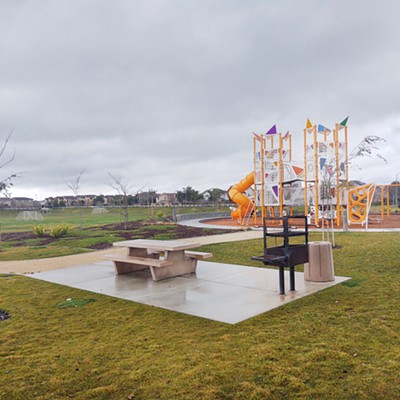Almost as soon as Santa Barbara County made the final supplemental environmental impact report (EIR) available for ExxonMobil’s proposal to truck oil along highways 101 and 166, environmental advocates were ready with a response.
“ExxonMobil wants to put California communities and motorists in harm’s way, just to restart its dirty and dangerous offshore platforms,” Center for Biological Diversity Ocean Legal Director Kristen Monsell said in an Aug. 16 press release. “It’s unbelievable they still want to use hazardous Highway 166 over the strong objections of county planning staff. These decrepit offshore platforms should be decommissioned instead of brought back to life to threaten our lives and climate.”
The project initially proposed in 2017 would restart the existing ExxonMobil Santa Ynez Unit (SYU)—three offshore oil platforms and an onshore processing facility at Las Flores Canyon along the Gaviota coast—which has been closed since 2015, when the Plains All American Pipeline ruptured, spilling thousands of gallons of oil near Refugio State Beach.
Trucking is the only way to resume the facility’s oil operations, according to ExxonMobil spokesperson Julie L. King. It’s the sole option to transport crude oil from offshore oil platforms to to pump stations in Santa Maria and Kern County until a pipeline is available, she said. The EIR covers trucking operations until a pipeline restarts or for seven years, whichever comes first.
“Resuming operations at SYU would bring a number of benefits to Santa Barbara, including jobs and millions in vital tax revenues for county schools, public safety, and health care services,” King told the Sun via email. “Our highest priority is the safety of our employees and contractors and the people who live and work in our community. There is a robust regulatory structure in place to monitor our trucking permit. Our trucking routes must be approved by the county, and we must follow more than 100 laws, rules, regulations, and policies at county, state, and federal levels governing our operation, which are among the strictest in the world.”
According to the EIR, which the county released on Aug. 16, the trucks would enable ExxonMobil to transport an estimated 11,200 barrels of oil a day, which represents about one-third of SYU production prior to the pipeline shutdown. Trucking would occur 24/7, with no more than 70 trucks leaving the SYU facility within a 24-hour period. Oil trucks would travel to the Santa Maria Pump Station near Orcutt, the Santa Maria Refinery in Nipomo, and the Pentland Terminal in Maricopa.
Although a final EIR was ready and slated to go before the Santa Barbara County Planning Commission last summer, Phillips 66’s announcement that it was closing both its Nipomo refinery and the pump station near Santa Maria delayed the project, county Energy, Minerals, and Compliance Division Supervisor Errin Briggs said. The project was put on hold while ExxonMobil decided how it wanted to proceed.
“[The] preference on everybody’s part [was] to use the Santa Maria facility, and as long as that facility remains open, then they will continue to use it,” Briggs said. “The only thing that really has changed is the news that Phillips will close that facility sometime in 2023.”
When the refinery closes, all of the trucks will head north on Highway 101 and east on Highway 166 to get to the facility in Maricopa, which can pump oil into pipelines that head north to refineries in the Bay Area or south to Los Angeles.
The final EIR outlines the project, its environmental impacts such as greenhouse gas emissions and oil spills, and outlines alternatives (including reducing the maximum number of trucks per day to 50) that could lessen those impacts. It’s available for public review on the county Department of Planning and Development’s website and tentatively scheduled for hearings before the Santa Barbara County Planning Commission on Sept. 29 and Oct. 1.
Briggs said staff’s job is to take the project as proposed, analyze it, ensure it abides by county rules/regulations, and get it to the decision makers.
“The project is pretty straightforward. It kind of speaks for itself,” Briggs said. “I understand that it’s an emotional issue for a lot of people, but as staff we try to maintain as factual approach as possible. … We’ve gone through that entire exercise. … It’s nice to finally get this to the decision makers.”












